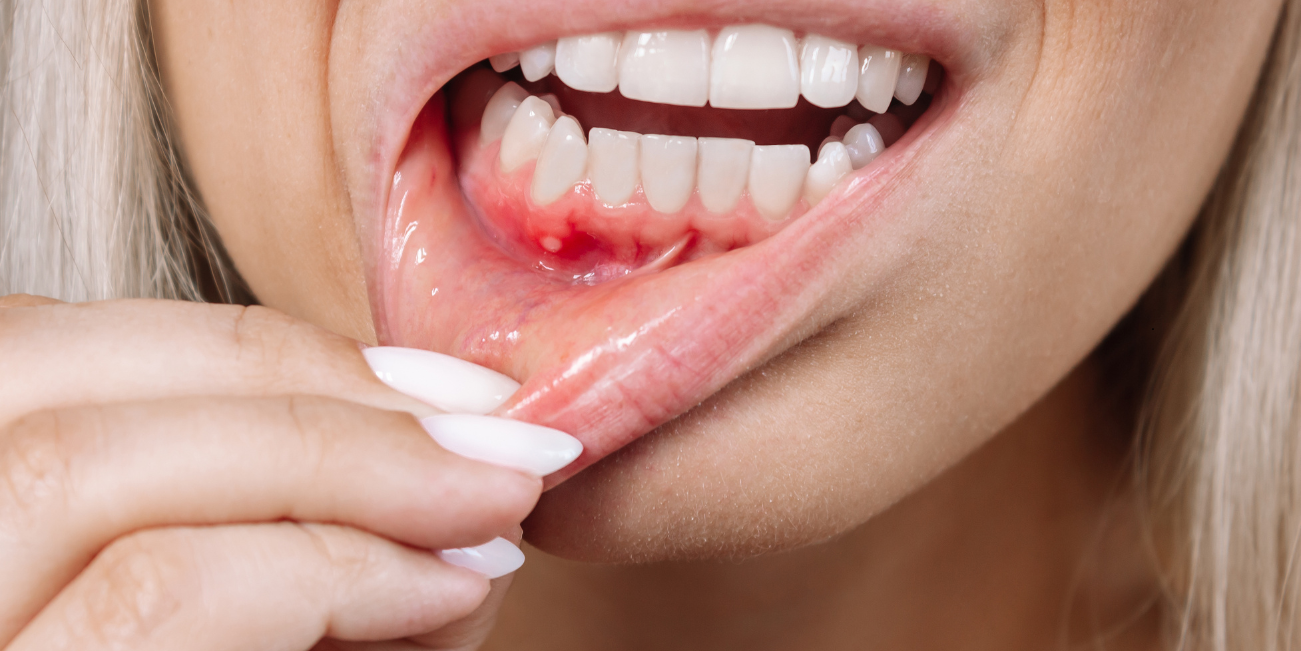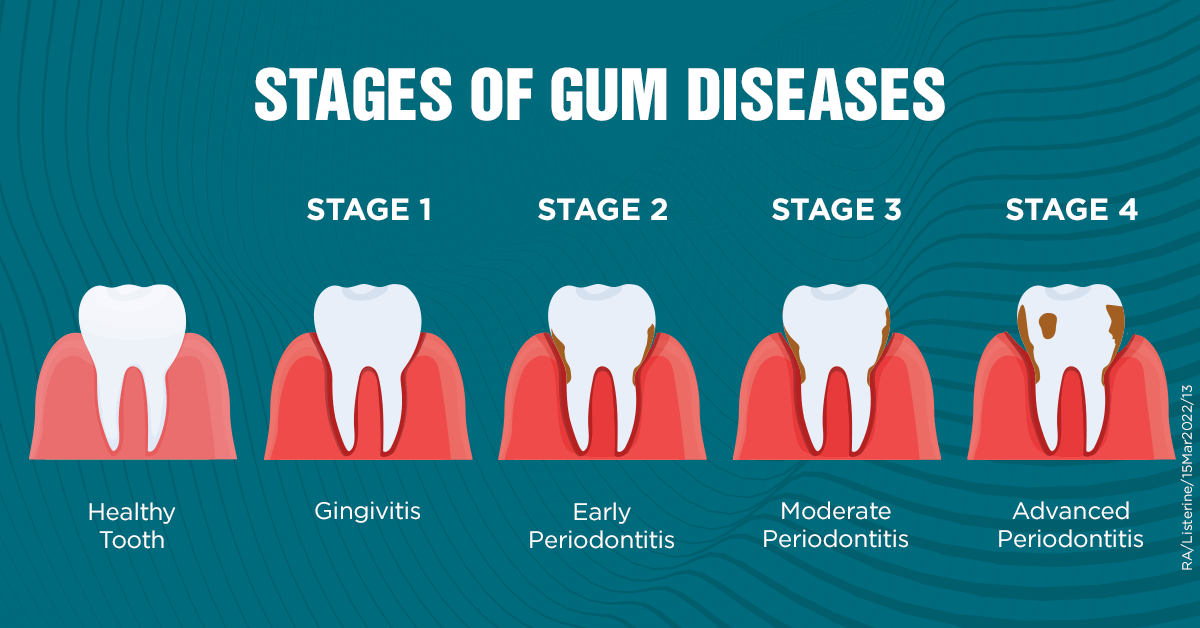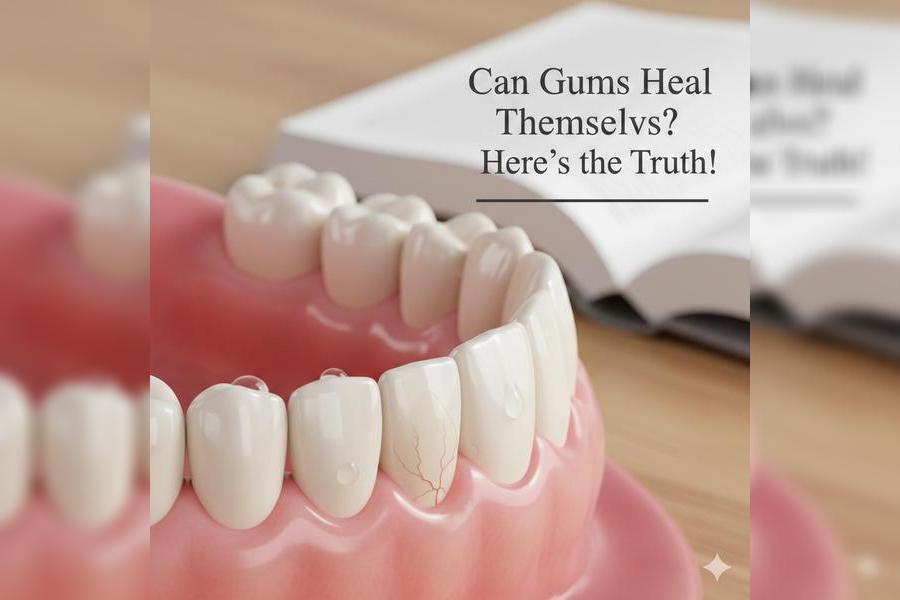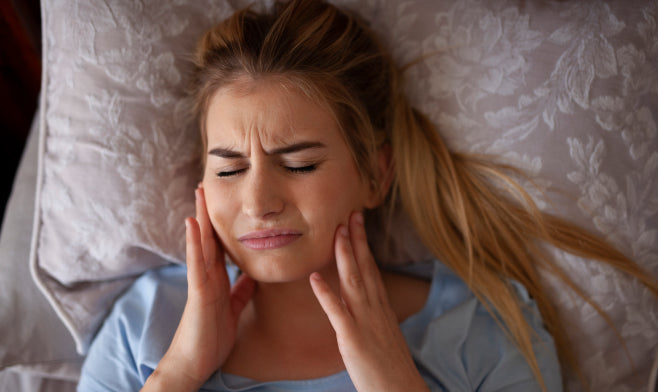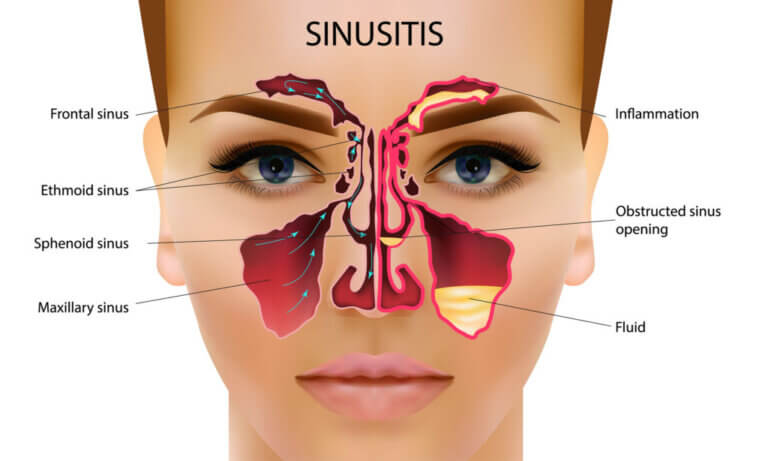You notice your gums are a little red, maybe they bleed when you brush, and you think, “Eh… probably just brushed too hard.” A few days later, the swelling kicks in. Then the throbbing. And before you know it, your mouth feels like a tiny construction site - painful, inflamed, and impossible to ignore.
Gum infections are way more common than you think - and most of them don’t actually need antibiotics to heal. Yep, you read that right.
The first time I heard someone ask, “Is it possible to treat a gum infection naturally?” I thought it sounded risky. But the more you dig into the science (and real-world results), the clearer it gets: there are plenty of ways to fight infection, kill bacteria, and soothe inflammation without ever touching a prescription bottle.
So if you’re searching for how to treat a gum infection without antibiotics, this is where your DIY healing journey starts. We’re going to talk about what’s really happening in your gums, why it’s not something you should ignore, and all the proven, natural ways to handle it - from home remedies to lifestyle tweaks that actually stick.
The Mess Behind the Swelling
A gum infection doesn’t happen overnight. It’s usually weeks (or months) of buildup, irritation, and neglect that finally push your gums over the edge. The main culprit? Bacteria.
When the sticky stuff (plaque) on your teeth is not brushed or flossed off it hardens to tartar. This tartar serves as a warm welcome to bacteria which in turn attacks the soft tissue surrounding your teeth. Inflammation is caused by that invasion and before you know it, you are having swollen, red and painful gums that turns every meal into a form of punishment.
The Usual Suspects Behind Gum Infections
-
Skipping proper brushing or flossing – letting plaque build up until it hardens.
-
Weakened immune system – your body’s defenses are down, bacteria move in.
-
Smoking or tobaccoP - delays healing and also lowers the gum circulation.
-
Unhealthy eating habits- lack of the right amount of vitamins and excess sugar nourishes bacteria.
-
Changes in hormones- pregnancy, menopause, or monthly cycles can increase the sensitivity of gums.
The Hard question: “Can gum infections go away without treatment?”
Well - not usually. Mild gingivitis might reverse itself with better hygiene, but once an infection takes hold, you’ll need to actively treat it - which is why learning how to treat a gum infection without antibiotics matters so much.
Warning Signs You Shouldn’t Brush Off

Gum infections love to fly under the radar at first. They start off subtle - a little redness, some bleeding - and before you know it, things have escalated. Spotting the signs early gives you a much better shot at tackling the problem naturally.
Look out for these classic red flags:
-
Swollen, puffy gums – inflammation is your body’s SOS signal.
-
Bleeding during brushing or flossing – early sign of gingivitis.
-
Persistent bad breath – bacteria release foul-smelling sulfur compounds.
-
Receding gum line – tissue is being destroyed.
-
Loose teeth or tooth pain – infection has gone deeper.
How long does a gum infection last without treatment? Honestly speaking, it depends on severity, but most won’t heal on their own. Left untreated, mild cases can linger for weeks. Severe cases can destroy gum tissue and bone over months - sometimes leading to tooth loss.
Natural Fixes That Work
Okay, now for the part you actually came for - what you can do about it. The good news? Nature has given us some pretty powerful tools to fight infection, reduce swelling, and support healing - all without antibiotics.
1. Saltwater Rinse – Your First Line of Defense
Salt is one of the oldest and simplest antiseptics out there. It pulls moisture (and bacteria) out of swollen tissue, reduces inflammation, and speeds up healing.
How to do it:
-
Stir 1 teaspoon of sea salt into a glass of warm water.
-
Swish it around your mouth for 30 seconds.
-
Spit and repeat twice a day.
It’s not magic, but it’s one of the most effective first steps you can take.
2. Oil Pulling
It might sound strange, but oil pulling - swishing oil around your mouth - has been used for centuries to detoxify and reduce bacteria. Coconut oil is the go-to because it’s antimicrobial and soothing.
How to do it:
-
Take 1 tablespoon of coconut or sesame oil.
-
Swish gently around your mouth for 10–15 minutes (don’t swallow!).
-
Spit, rinse with warm water, then brush as usual.
Do this daily for a week and you’ll notice fresher breath and less gum tenderness.
Clove Oil – Nature’s Tiny Antibiotic
Clove oil has been proven an epic hero to gums. It contains eugenol to the brim making it a natural antiseptic and a pain reliever. It soothes the aches, combats bacteria and swellings - in a single dose.
How to use it:
-
Mix a few drops with a carrier oil (like coconut oil).
-
Gently massage into your gums once or twice a day.
Bonus: it smells like Christmas cookies.
4. Aloe Vera – Calm the Fire
Aloe vera is not only useful in sunburn. Its anti-inflammatory and antimicrobial effects make it an effective analgesic to agitated gums.
How to use it:
-
Apply pure aloe vera gel directly to swollen gums.
-
Let it sit for a few minutes, then rinse.
-
Repeat daily for best results.
Wondering what kills gum infection naturally? A combo of saltwater rinses, essential oils, aloe vera, and oil pulling often does the trick for mild infections. Consistency is key - these aren’t one-and-done fixes.
Your Diet Matters More Than You Think
Here’s a fact that surprises a lot of people: your gums reflect what’s happening in the rest of your body. If your diet is heavy on sugar, processed foods, and alcohol, you’re basically handing bacteria a VIP pass. If it’s packed with nutrients and anti-inflammatories, you’re helping your gums fight back.
Foods That Heal
-
Vitamin C – helps rebuild gum tissue (think citrus, bell peppers, kiwi).
-
Omega-3s – reduce inflammation (found in salmon, flaxseed, chia).
-
Antimicrobial foods – garlic, ginger, and turmeric fight bacteria.
-
Zinc and iron – support your immune system.
Foods That Harm
-
Sugar – feeds bacteria and makes plaque worse.
-
Alcohol – dries your mouth and slows healing.
-
Tobacco – cuts off blood flow and prevents gum recovery.
Quick question: Can diet reverse gum disease?
While diet alone won’t “cure” a severe infection, it plays a massive role in healing and prevention. Pair the right nutrition with good oral care and you’re halfway there.
When Natural Products Can Give You an Edge
Sometimes, brushing and rinsing just isn’t enough - especially if you’re already dealing with bleeding, tooth sensitivity, or deeper infection. That’s where a natural oral care solution can tip the scales.
One we always recommend is The Goodbye Company Gum Disease Oral Solution and not because it’s trendy, but because it works. Here’s why:
-
It’s infused with Omega 3 and 9 oils, which are known for their anti-inflammatory power.
-
It’s packed with neem and clove essential oils - natural heavyweights when it comes to killing bacteria.
-
It’s designed not just to prevent gum disease, but to actively support healing if you’re already struggling.
If you’re serious about mastering how to treat a gum infection without antibiotics, adding a targeted product like this into your daily routine can make a world of difference.
Leveling Up: Natural Treatments That Go Beyond the Basics
If you’ve made it this far, you’re already way ahead of most people. Salt rinses, oil pulling, and a cleaner diet are the foundation - but sometimes gum infections need more than the basics. Especially if you’re dealing with recurring inflammation, chronic bleeding, or that deep, dull ache that just won’t quit.
Herbal Mouth Rinses – Your Daily Defense Against Bacteria
Not a fan of store-bought mouthwash? Honestly, most commercial options are packed with alcohol and chemicals that kill everything - good bacteria included. That’s not what we want. Instead, go for natural antimicrobial rinses that fight infection without disrupting your mouth’s delicate ecosystem.
A few easy options to make at home:
-
Sage rinse: Boil sage leaves in water, let it cool, and swish for 30 seconds. Sage is a natural anti-inflammatory that reduces swelling.
-
Chamomile rinse: Works wonders on sore gums and helps tissue repair.
-
Neem rinse: This one’s a heavy-hitter - neem fights bacteria, strengthens gum tissue, and reduces plaque.
Want to know what is the fastest way to heal gum infection naturally? Consistency is the real answer. Daily rinses with herbal solutions, paired with oil pulling and saltwater, often show results within a week or two - especially in early stages.
Cold Compress & Gentle Massage – Help Your Gums Heal Faster
Sometimes, healing isn’t just about killing bacteria - it’s also about reducing inflammation and encouraging blood flow so your body can do its job. That’s where simple techniques like cold compresses and gum massage come in.
-
Cold compress: Hold a cold cloth or ice pack (wrapped) against your cheek for 5–10 minutes. It reduces swelling and dulls pain.
-
Gentle massage: Using a clean finger, lightly massage your gums in a circular motion. This boosts circulation and helps clear away trapped bacteria.
Think of it as physical therapy for your mouth. It sounds small, but paired with other remedies, it makes a noticeable difference.
Your At-Home Gum Infection Toolkit
To make things easier, here’s a quick breakdown of some of the most effective natural treatments for gum infections - what they do, and how they stack up:
|
Remedy |
Best For |
Key Benefits |
How Often to Use |
|
Saltwater rinse |
Mild infections, early symptoms |
Kills bacteria, soothes swelling |
2x daily |
|
Oil pulling |
Reducing bacteria, freshening breath |
Detoxifies mouth, supports healing |
Daily |
|
Clove oil |
Pain relief, deeper infections |
Antimicrobial, numbing effect |
1–2x daily |
|
Aloe vera |
Irritation and redness |
Speeds healing, reduces inflammation |
Daily |
|
Herbal rinses |
Chronic infections, prevention |
Antimicrobial, strengthens gums |
1–2x daily |
|
Cold compress & massage |
Pain, swelling |
Improves circulation, reduces inflammation |
As needed |
Prevention: The Part Everyone Skips (But Shouldn’t)

Here’s a truth bomb most people don’t like hearing: once you’ve had a gum infection, you’re more likely to get another one. The bacteria that caused it? They love coming back - especially if your habits haven’t changed. That’s why prevention isn’t a bonus… it’s the real long-term solution.
- Brush twice a day for two full minutes.
- Floss daily - even if you hate it.
- Use a soft-bristled toothbrush to avoid irritating your gums.
- Add a natural rinse to your nightly routine.
- Try oil pulling 3–4 times a week.
- Massage your gums weekly to boost circulation.
Small changes make a huge difference here.
-
Gums bleeding heavily or spontaneously
-
Loose teeth or shifting bite
-
Pus or foul-tasting drainage
- Fever or signs of infection spreading
A Natural Solution Worth Adding to Your Routine

We’ve talked a lot about home remedies and DIY treatments, but if you’re serious about long-term gum health, adding a targeted natural product can make everything work better - faster.
One of the best I’ve seen is The Goodbye Company Gum Disease Oral Solution. Here’s why it’s a game-changer:
-
It’s loaded with Omega 3 and 9 oils, which fight inflammation and support healing.
-
It uses neem and clove essential oils - two of the most powerful natural antibacterials out there.
-
It’s designed to help with gingivitis, bleeding gums, tooth sensitivity, and even early periodontitis.
What makes it stand out is how gentle but effective it is. Instead of nuking your mouth with chemicals, it supports your body’s healing process. It’s basically the perfect sidekick if you’re learning how to treat a gum infection without antibiotics and want a little extra firepower.
FAQs: Clearing Up the Last-Minute Questions
Can saltwater cure a gum infection?
It can absolutely help. Saltwater reduces inflammation, kills bacteria, and speeds up healing - but for deeper infections, you’ll need a combination of treatments.
Is hydrogen peroxide good for infected gums?
A diluted hydrogen peroxide rinse can help reduce bacteria, but it’s best used occasionally, not daily. Overuse can irritate your gums.
How do I know if a gum infection is healing?
Less bleeding, reduced swelling, less pain, and no more bad breath - these are all good signs you’re on the right track.
Should I floss if my gums are infected?
Yes - gently. Removing plaque and debris is key to healing, but be careful not to irritate already-inflamed tissue.
Outlook
Gum infections can feel scary. They’re painful, annoying, and easy to ignore until they’re not. But the good news? You have way more control than you think.
From saltwater rinses and clove oil to diet changes and herbal rinses, there are plenty of ways to tackle the problem naturally - and most of them cost next to nothing. The trick is to stay consistent, listen to your body, and give your gums what they need to heal.
And if you want to take things up a notch, introducing something like The Goodbye Company Gum Disease Oral Solution into your daily routine can make all the difference - especially if you’re dealing with recurring issues.
At the end of the day, learning how to treat a gum infection without antibiotics isn’t just about skipping a prescription. It’s about understanding your body, working with it, and creating an oral care routine that supports long-term health. Do that, and you won’t just heal your gums - you’ll protect your whole smile.









